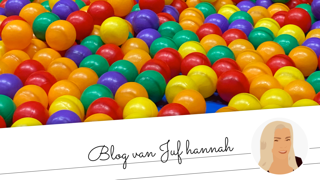In the car on my way to work I have the radio on. A well-known game is played: "The sound!". There is a kind of short crack from which it must be determined from which action and from which object this originates. I see a kind of salad bowl in front of me where a plastic top has to be removed to get to the lettuce. The corners of my mouth pull down and my shoulders up. It could really be anything.
In the group I talk about it briefly with the children. How's that going, that listening. How much do you hear and fill in yourself? The children come up with beautiful examples. Some are also about lying in bed when it's time to sleep. "Then it's dark and you don't see anything..." "Sometimes I hear something and then I think of a ghost!" "Then all of a sudden the sound fits right into my imagination..." "When I turn on the light quickly, I always see that it's something else. Often it's my cat scratching at the door". We laugh together: a ghost cat!
We agree that what you hear is not always what's actually going on. Could that also be done with a story that is told to you? I ask the children. "Or during a conversation? So that you think you hear something different than what was actually said?" There is a moment of silence. I love these silences in between... That means thinking.
Jayda takes the floor. "The other day, my neighbor didn't understand me very well. The ball came on his flowers. He thought I was doing it on purpose to break his flowers." "He was angry at first and didn't hear me right... Later I was able to explain to him that my little brother had kicked it and it was really an accident." We discuss intention, feeling and previous experiences when placing sounds. We also talk about how clever it actually is that sometimes you hear a sound continuously, but then you can still hear what is being said. "Like in the Monkey town! Kees shouts, there's a lot of noise there!" Another child adds: "My mother calls it the screeching palace". We laugh together again and then decide together that listening - listening attentively without directly filling in what the other person means - is very important. "Then there would probably be less arguing" Jayda adds.
In the group we do a number of exercises to promote listening. One of them is "the Mixer"; Here you try to dissect which sounds you hear and what the origin is. Just like discovering ingredients in a particular dish. In this way, children practice being able to listen in a targeted way. A second is practicing silence. Silence to organize one's own thoughts - to see what comes in and discuss it with each other. At a school there is often some noise, quiet is good enough at such a moment. A third exercise in adopting different postures while listening. You can listen by really only listening (passively) but also by responding directly to what is being said. You can listen critically but also empathetically. By fiddling with this, children become aware of different forms of listening.
We also practice summarizing and asking questions. The children enjoy this. Some people do this more easily than others, that's not an issue. Children help each other.
I realize that being able to listen well is important for every person. Being aware of your own interpretations, expressing intentions to each other and asking questions in case of misunderstanding.
On the way back home, I turn on the radio in the car again. The sound is guessed!! It was a fire blanket that was pulled out of the holder.' A totally overwhelmed gentleman wins €51,600,-. What money!
Hmm... Not a salad bowl anyway - I say laughing to myself. Just practice listening ;)
Until next time!
Love Hannah
